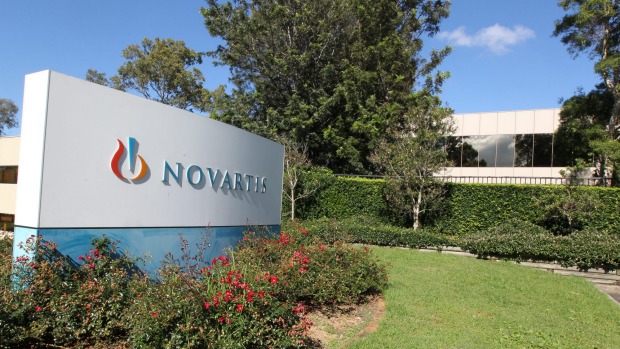
The $US200 million upfront payment from Novartis assures all existing investors a return of at least three times their invested capital. Photo: Peter Rae
Swiss pharmaceutical giant Novartis International has agreed to pay $US200 million ($261.83 million) upfront and committed up to an additional $US500 million in milestone payments to acquire Australian drug developer Spinifex Pharma.
The deal has sparked calls for the Abbott government to reverse its cuts to early-stage funding for commercialisation of Australian research.
Spinifex Pharma attracted attention from international suitors after the results of its phase 1 and phase 2b clinical trials with patients suffering ongoing neuropathic pain following a bout of shingles were published in respected medical journal The Lancet.

University of Queensland Professor Maree Smith, who discovered the technology. Photo: Robert Shakespeare
“It was 2003 when I first saw some unusual results in the lab,” University of Queensland Professor Maree Smith, who discovered the technology, said.
“It was almost a year later that the first proof of principle data actually got generated in rodent models of neuropathic pain. That was the eureka moment and smiles all round. I remember very clearly the moment in August 2012 when I received a phone call and the voice on the other end just said: It worked.”
Most treatments for chronic pain block pain receptors in the brain, but Ms Smith discovered a way to target nerve receptors. There are possible applications treating pain associated with diabetes, shingles, chemotherapy, and osteoarthritis.

Professor Maree Smith from University of Queensland discovered the technology.
More than 10 per cent of the proceeds from the sale will go to 20 option-holding employees, including Professor Smith.
The $US200 million upfront payment assures all existing investors a return of at least three times their invested capital. Future milestone-linked payments could result in some investors making up to 11 times their money.
Milestone payments
Achieving the milestone payments, which are linked to success in future late-stage clinical trials, would bring the total deal value to $US700 million. That makes it the most successful exit in the history of Australia’s burgeoning venture capital industry, taking the title from the CHAMP Ventures-backed LookSmart, which listed on the NASDAQ in 1999.
Spinifex had attracted $US70 million in venture capital since it was founded. The Novartis deal has the potential to be a “10-bagger” (returning more than 10 times the original investment) for Melbourne-based GBS Venture Partners, which has poured $20 million into the company over the past decade.
GBS backed Spinifex in its series A funding round in 2005, with the government’s now defunct Innovation Investment Fund (IIF). GBS also participated in the series B funding round through a range of vehicles, including government-backed funds, private investors, and direct investments on behalf of AustralianSuper, MTAA Super, and the University of Melbourne.
Other investors in the series B round were university venture funds Uniseed and UniQuest, and medical research-focused venture fund Brandon Capital. United States investors Canaan Partners and Novo backed the series C funding round.
GBS Venture Partners managing director Brigitte Smith said Spinifex’s success was proof that the AusIndustry IIF program, which was cancelled in 2014, worked and should be revived.
“It is a shame that the program, which operated with bipartisan support between 1998 and 2014, has been cancelled and I would urge the government to bring it back,” Ms Smith said.
Uniseed chief executive Peter Devine agreed the deal underscored the need for the government to provide early-stage funding to get Australian research to market.
“That early risky stage. That’s when you need government support because investors won’t come in … we want to see more things get out and over the valley of death.”
